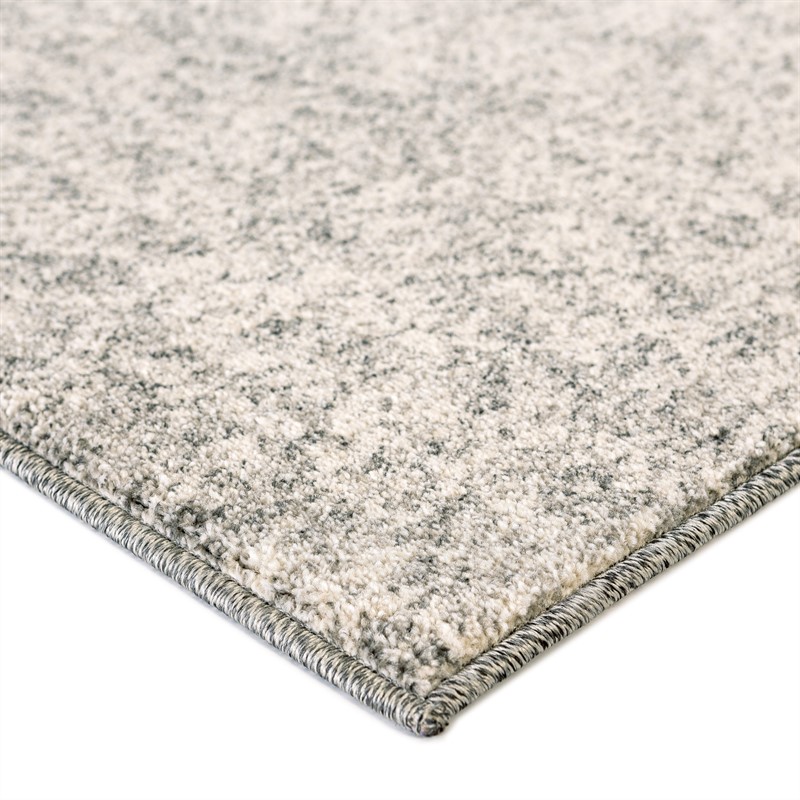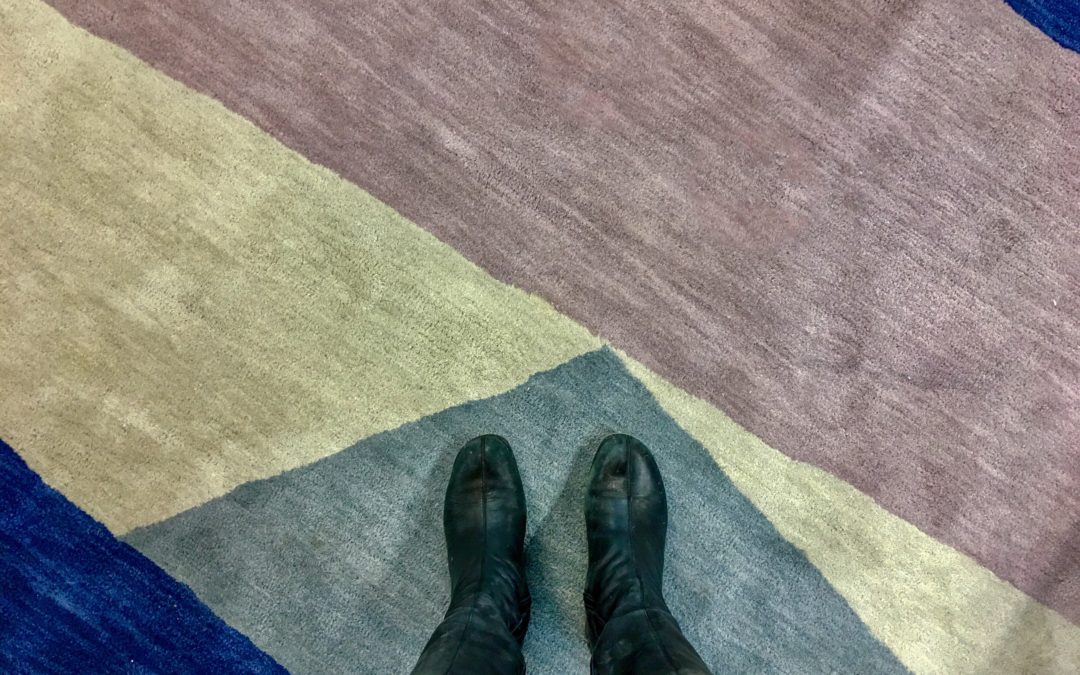If you’ve ever shopped for an area rug before you’ll quickly understand how the enormous selection of sizes, textures, and price points can be enough to make you lose your mind. It’s true, there’s a lot of choice out there but if you know what to look for I promise it’s easier than you think. I grew up in a house without area rugs. Most of my friends didn’t have area rugs in their homes either. As a child of the 90’s, wall to wall carpeting never allowed for me to experience the benefits of a properly curated rug. When I finally decided to get an area rug it was a shabby zebra print rug from a discount box store. I thought of it as nothing more than something pretty to look at on my bedroom floor. Let’s just say it wasn’t something welcoming to bare feet in the morning. It took me working in the Furniture industry to come to the revelation that rugs can be more than “something pretty”.
So you’d like a rug. Now what? Start with learning about the basics. What type of construction are you looking for?
Machine Woven: These budget friendly rugs are available in a variety of colors and patterns. They tend to be made of synthetic or inexpensive fibers. Machine made rugs take a very short time to produce and as such offer a considerable cost savings to traditional handmade rugs. The quality of a machine made rug can vary depending on the material used to create the rug. A good quality machine made rug can last for up to 20 years if properly cared for. There are drawbacks though. Machine made rugs tend to have a firm backing that doesn’t always sit flat to the floor. If the rug has been rolled for an extended period of time it can be extremely difficult or near impossible to get the curl out of the rug. Even to the untrained eye a machine made rug can look a little too perfect, giving away their not so dark secret – you do get what you pay for.

Natural Fiber: Though mainly handmade, most of these rugs also tend to lean towards the budget friendly category due to the cost of their raw materials. Larger fiber stands create a larger knot which hasten production times whether construction is braided, woven or knotted. Made of fibres such as Jute, Sisal and Seagrass they have a distinctively earthy look to them. Tightly knotted sisal rugs wear well in high traffic areas while a softer natural fiber such as Jute should be used in low traffic areas. Though natural fiber rugs are now available in a variety of colors and patterns it must be noted that they are more difficult to clean and usually have a coarser texture than area rugs made of other fibers. They definitely aren’t for everyone but do have a bit of a cult following with a look and feel that just can’t be compared to anything else.

Hand Tufted: If you’re looking for a handmade rug in an intricate pattern but don’t want to make a big investment this may be the rug for you. Usually made of wool, these rugs take an average of 10 days to create by hand. The artist uses a specialized gun to loop the yarn through a patterned backdrop in a rate that isn’t possible with hand knotting. The fiber loops are glued in place into the backing of the rug. The results are a beautiful patterned rug at a fraction of the cost of traditional hand knotting. The drawbacks would be that while handmade, expect a fair amount of shedding at first that will subdue over time.

Hand Loomed: This handmade process is done by weaving yarn through a loom. The loom can be run by multiple people who must coordinate their movements precisely. Because of the weaving process the majority of styles available will reflect either solids or simple / geometric patterns. Hand looming generally does not require a backing which allows the rug to sit flat on any surface. This type of rug is usually available in a wide variety of materials such as nylon, viscose, tencel, wool, cotton, the limits are endless. Pricing can vary widely. It’s not uncommon for a single rug to take 4 months to produce. Raw material costs and the intricacy of the pattern created both affect the price point.

Hand Knotted: The crème of the crème in the rug world. Hand knotted rugs are serious business. Carefully created by a single artist to assure the consistency in every knot these rugs can take anywhere from 3 months to 2 years to produce. The average hand knotted rug contains 180 knots per square inch. All the more spectacular is that the rug patterns are reproduced by eye. The artist is given a simple paper copy of what the client is wanting and is able to produce an accurate representation using only their sight and touch. It’s true that when you own a hand knotted rug you really get a piece of the artist’s soul with it. The hefty price tag comes with an expected lifespan of 50-100 years. These are the rugs you’ll see at auction with a handful of collectors eagerly awaiting to place bids on. They do tend to hold their value. As with most rugs the price will vary depending the materials chosen and the pattern created.

If construction isn’t your top priority may I suggest narrowing down by material? What your rug is made out of shouldn’t be taken lightly. While the options are truly endless, the most commonly found materials are listed below.
Heat set Polypropylene: Is a synthetic fibre that takes color very well. The yarn is twisted and then exposed to heat to help retain its shape and texture. This type of fiber is predominately used in machine made rugs. It carries a soft, wool like hand. The larger the pile the softer the rug but be warned with excessive use the fibers can unwind creating a bit of a frizzy mess.
 Polyester: Is another common rug fiber often combined with other fibers to produce creative textures. This stain and fade resistant material can be found in most rug constructions but doesn’t usually appear in hand knotted rugs. Its raw material cost is lower than many other fibres. As such polyester rugs are common in rugs of low to mid-range price points.
Polyester: Is another common rug fiber often combined with other fibers to produce creative textures. This stain and fade resistant material can be found in most rug constructions but doesn’t usually appear in hand knotted rugs. Its raw material cost is lower than many other fibres. As such polyester rugs are common in rugs of low to mid-range price points.

Viscose: Sometimes referred to as Ark Silk, this fibre has a luxurious sheen and super soft texture. Allowing for the look and feel of actual silk at a fraction of the cost. Viscose is produced from wood pulp, cellulose to be exact. Though it may sound like a natural product it’s highly processed and involves multiple steps creating a lot of waste by-products. Sometimes used on its own but usually blended with other fibers. It is a common fibre in all types of rug construction. While it doesn’t wear well in high traffic areas, its low nap does allow for easier cleaning and follows the current trend of lower nap rugs.

Jute: This affordable natural fibre is soft to the touch and eco-friendly. Woven from the stalks of jute plants, its natural brown hue can be died many colors. As Jute is one of the softest natural fibers it is inherently less durable than other natural fibres, such as sisal, and should be used in lower traffic areas.

Sisal: This stiff natural fiber is woven from the leaves of the Mexican Agave plant. Its natural lighter hue can be dyed multiple colors. Sisal is incredibly durable and a good fit for high traffic areas where softness underfoot isn’t a major concern such as hallways and entryways.

Wool: One of the best options for durability. Wool rugs are a great high traffic option. While it can be found in many different construction styles it’s easiest to find in hand made rugs. While all wool is considered “durable” a lower quality wool rug will shed- excessively. Standard Wool is also machine spun, cleaned and bleached which cuts down on cost and time but produces a weaker fiber. Note that if it’s just labelled as “wool” it’s not necessarily from that cute fluffy sheep you’re picturing in your head. Lower quality wool rugs can come from a variety of animals, even goat and camel!

New Zealand Wool: The highest quality rugs are made of New Zealand Wool. It differs from standard wool as it is ALL processed by hand. The wool is sorted by color and removed of dirt and impurities free of any mechanical help. As the cleaning is done by hand there is no chemical processing resulting in a softer, more durable yarn. If that wasn’t enough the fibers are even hand spun and hand dyed. While some shedding is expected with any wool rug , New Zealand Wool rugs tend to shed a considerable amount less than standard wool. You’ll have to up your budget for a rug of this caliber. New Zealand Wool rugs can be found at a mid-range price point but the majority of them are found at the highest price points.
If you’re still a little unsure of what rug is right for you I’d suggest talking with a professional sales person who can help steer you into the right direction. A good sales person can tell you about the construction, the materials used and can offer you advice based on the feel, traffic flow, expectations and budget you are comfortable with.



